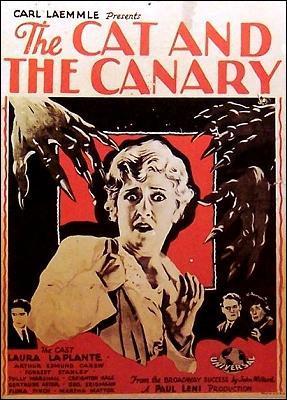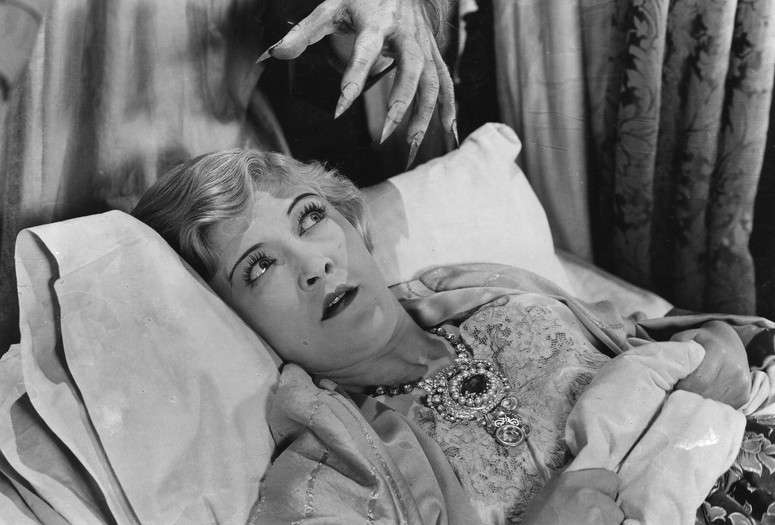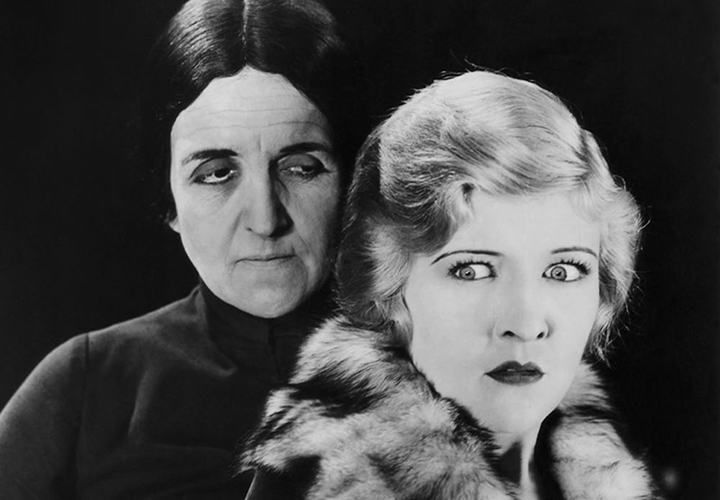 This 1927 haunted house classic is seriously hokey, but worth seeing nonetheless due to the extraordinary visuals created by director Paul Leni.
This 1927 haunted house classic is seriously hokey, but worth seeing nonetheless due to the extraordinary visuals created by director Paul Leni.
Paul Leni was a German expatriate, known primarily for his avant-garde films, who brought all the flair of the German expressionist movement that distinguished classics like THE CABINET OF DR. CALIGARI and WAXWORKS (co-directed by Leni) to the four films he made in Hollywood, among them THE CAT AND THE CANARY. It was inspired by a 1922 stage play by John Willard (see below), which by 1927 was already an extremely popular, oft-staged work.
Paul Leni, FYI, was set to direct the original DRACULA but was replaced by Tod Browning after Leni’s death in 1929.
The ancient millionaire Cyrus West lies dying in his mansion, having been driven mad by his greedy family. Eventually he passes, and his tormented ghost is said to haunt the mansion for the next 20 years, the amount of time specified by West for his will to be read. When that time arrives West’s relatives turn up at the mansion for a reading of the will, but there’s a problem: the safe containing the will, which is supposed to have been locked for the past two decades, has been opened!
The will turns out to be extremely complicated: it stipulates that West’s grown daughter Annabelle will inherit his fortune, but only if a specially appointed doctor certifies her as sane. If not than the money goes to someone else whose name is written on a sealed note. The problem is that the person whose name is written on the note has apparently already seen it and may try to do Annabelle harm. West’s butler Mr. Crosby knows who this unknown person is, and is about to reveal his/her identity to Annabelle when a clawed hand emerges from a hidden opening behind a bookcase and snatches him away.

When Annabelle announces this odd fact to the house’s other occupants they think she’s nuts. What follows is a series of apparently supernatural shenanigans–not to worry, though, because all the weirdness is soundly debunked in the end, having been caused by a mischievous thief looking to make off with Annabelle’s riches.

The opening shot, utilizing extremely precise compositions and multiple dissolves, is a stunner. Virtually all the things that made silent films distinctive are on display in Paul Leni’s unfailingly inventive, innovative and masterly images: irises, dissolves, superimpositions, artfully distorted lenses, creative intertitle fonts, expressive light and shadow, etc. Yet Leni, who was one of the key figures in German expressionism, adds an experimental boldness to the mix that from a purely visual standpoint puts THE CAT AND THE CANARY ahead of most films of its time.
This leaves us with the story, which is just what it always was: corny, far-fetched and embarrassingly dated. I won’t even go into Leni’s attempts at “humor” (this film being an intended comedy). I’d recommend watching this film for the imagery, and ignoring the story.
Vital Statistics
THE CAT AND THE CANARY
Universal Pictures
Director: Paul Leni
Screenplay: Robert F. Hill, Alfred A. Cohn, Edward J. Montagne
(Based on the stage play by John Willard)
Cinematography: Gilbert Warrenton
Editing: Martin G. Cohn
Cast: Laura La Plante, Creighton Hale, Forrest Stanley, Tully Marshall, Gertrude Astor, Flora Finch, Arthur Edmund Carew, Martha Mattox, George Siegmann, Lucien Littlefield
